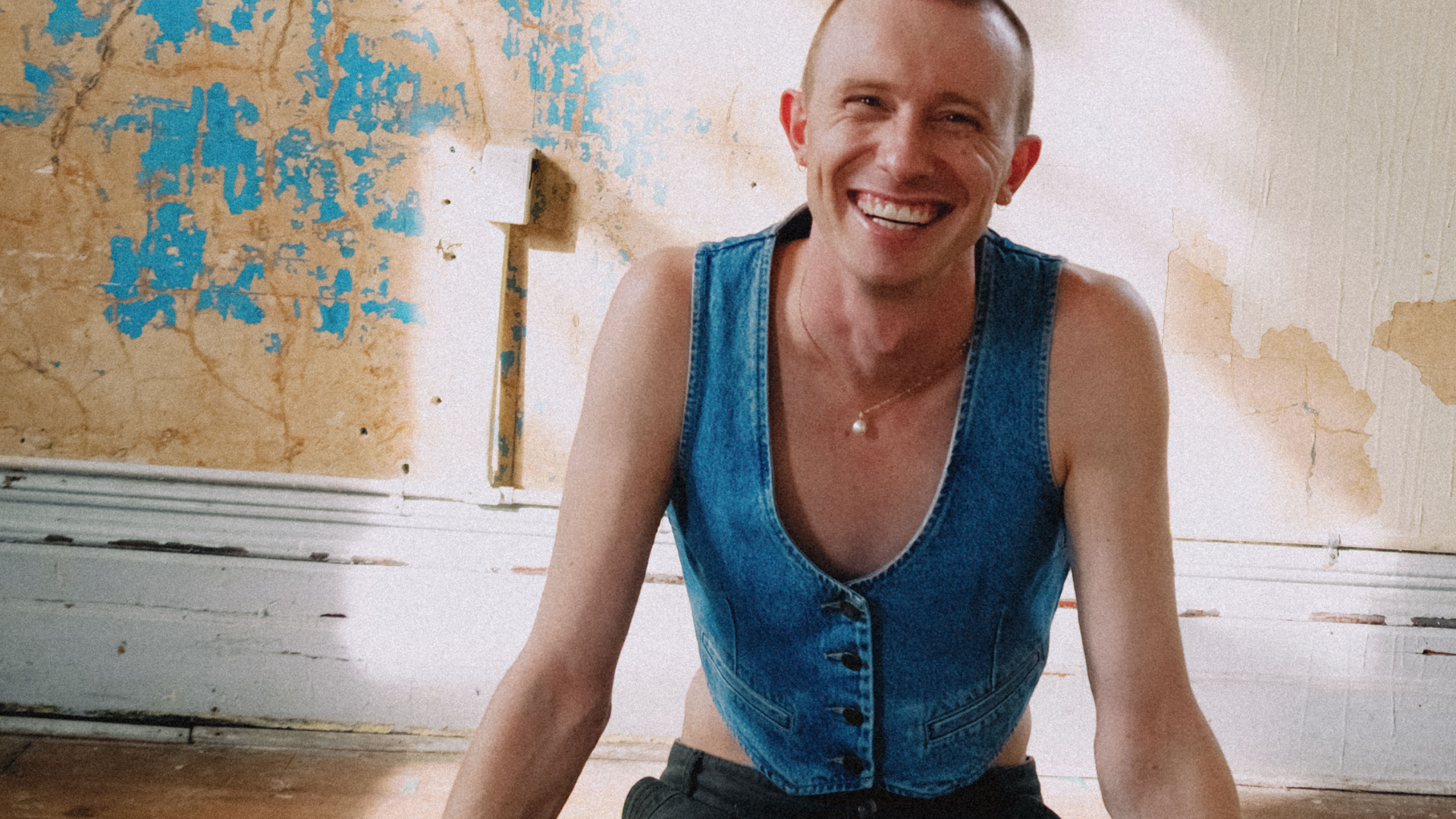Making Hope Real: How a clinical trial changed a patient’s treatment trajectory

Amidst pandemic restrictions in 2021, Tomas Parrish-Chynoweth spent months seeking answers for a persistent cough, itchy lower back and consistent elevated body temperatures in excess of 38 degrees. As a multidisciplinary artist – actor, musician, writer and composer, for Tomas, who sings as part of their career, these symptoms were crippling.
Doctor after doctor, numerous COVID-19 tests and five months later, Tomas still did not have any answers. It was at this point that Tomas shared these challenges with their singing teacher who suggested seeing Dr Amanda Richards, an ear, nose and throat specialist.
A few weeks later, Tomas was undergoing tests under the care of Dr Richards. It was then that their symptoms were assessed and after days isolated in a hospital wing, a diagnosis was confirmed. At just 26 years of age, Tomas was diagnosed with an aggressive form of Stage 2B Hodgkin lymphoma. The persistent cough, previously dismissed by doctors as ‘nothing serious’, was caused by an 11-centimetre tumour pressing up against their heart and lung.
Hodgkin lymphoma is a blood cancer that occurs when white blood cells grow and divide in an abnormal way, becoming cancerous. Around 800 Australians are diagnosed with Hodgkin lymphoma each year with 50 per cent of diagnoses in those aged between 15 to 39.
Tomas was immediately eligible for the SGN35-027 clinical trial, which replaced two of the four conventional chemotherapy drugs traditionally used for Hodgkin lymphoma with targeted immunotherapy drugs. Given the potential damage that traditional chemotherapy could cause and their desire to return to their career as an artist, Tomas describes the decision to participate in the clinical trial as a ‘no brainer’.
The clinical trial consisted of four rounds of treatment across a four-month period and was so effective that Tomas was classed as being in remission during only the second round of treatment. This meant that the cancer was no longer active within the body – the treatment and the trial were not just effective but had stopped the cancer’s growth in its tracks.
Following the clinical trial, Tomas underwent two months of conventional chemotherapy, a decision made by their medical team as the standard treatment protocol which comprised of radiotherapy was deemed too high risk given the position of tumours being near the heart and lung. The side effects of conventional chemotherapy were a stark contrast to those Tomas experienced on the clinical trial. The pain across their entire body worsened and they were even hospitalised at one point for bowel neuropathy.
“In hindsight when I was going through it, I just thought, wow, imagine if you went through this for four months instead of the clinical trial. I thought I was already going through hell until the final two rounds of standard chemotherapy. The trial was a godsend in comparison. It was a gift.”
Three years after completing treatment, Tomas is in full remission and has returned to their thriving career as an artist, having had their first play premiere in July, writing their first symphony and continuing their Doctorate in Music Composition.
“I feel that as a young person who has faced their own mortality in ways you don’t expect to for decades, I have a lot more to give than I thought. I think it felt like suddenly I was like, “Well, tomorrow isn’t promised so why not try to make today the day?”
Clinical trials make hope real for Australian blood cancer patients by transforming cutting-edge scientific findings into tangible treatment options. To support the latest innovative translational research and clinical trials, please make a tax-deductible donation to the Snowdome Foundation here.
